Photo exhibit captures night skies and California terrain aglow with wildfires
Photographer Stuart Palley has spent the last five years covering wildfires across California. An exhibition of his work, “Terra Flamma: Wildfires at Night” opens Saturday at the historic Santora building in Santa Ana. Palley mainly works at night so that the fires themselves become the main light source. He recently agreed to discuss his project:
Q: What is the most difficult aspect of covering wildfires at night?
A: The most challenging aspect of photographing wildfires at night is the often-steep terrain, unfamiliar roads, and shifting winds that occur as the temperature cools in the evenings. Fires usually burn in mountainous and hilly areas and navigating narrow dirt or forest roads is a hazard in itself, as is hiking around in the dark. Although I use a headlamp and have a backup light source, it can be hard to see more than a dozen feet in any direction unless the fire is very close and making it’s own light. I’m basically working in the dark to create photos, and its often a trial and error process to compose frames while hiking or driving around.
Q: What are some of your main safety concerns?
A: My chief safety concerns at wildfires are snags and road hazards. Snags are burned, dead, or weakened trees that have a hazard of falling over completely or have branches that can also fall. Many wildland firefighter fatalities are due to snags falling and it’s no different for anyone on the fire ground, media, command staff, or contractor. Trees ravaged by drought and bark beetle kill break like matchsticks, and once fire moves through they are primed for falling over. A dead tree stump can burn underground for days in the base of the tree and root system, and fall over a week later. Many areas are unsafe to hike in for years after a fire burns through. Additionally the extreme fire behavior of late driven by drought, heavy fuels, and climate change continues to surpass seasoned firefighter expectations and growth modeling, meaning that if you’re in the wrong place at the wrong time, there might not be much you can do to escape. The literal fire tornado with EF3 wind speeds in excess of 140mph at the Carr Fire and ensuing loss of firefighter and civilian lives as a result underscores the risk. So I play things very “safe” so to speak, keeping my distance, relying on experience, and listening and watching closely what the experts, the firefighters themselves do. If they leave, I leave. If they tell me somewhere isn’t safe, I stay away. I’m grateful to have a Firefighter II qualification and fire behavior training and experience.
Q: Do you work alongside firefighters?
A: I have the opportunity to photograph alongside firefighters as part of my call-when-needed contract with the US Forest Service, where I am officially assigned to a wildfire incident as a resource and photograph fire crews working to document the blazes and help the incident command team share updates. I often photograph alongside crews in California, obtaining permission from crew superintendents to shadow crews as they work for various periods of time on the fire line. It is a privilege to photograph the crews and see them working to protect lives, property, and resources through extremely tough conditions, - choking smoke, ash, and extreme heat for days on end with little sleep. Photographing US Forest Service hotshot crews, hand crews, and other agency crews like Cal Fire, Los Angeles County Fire, etc, in the back country allows me to share their story that not many people see. By experiencing the same conditions that they do, I appreciate the sacrifice they make, being away from home for weeks on end, sleeping in the dirt, and eating MREs. This year I’ve seen the fatigue on their faces, from fighting fires back to back with minimal rest days, the loss of friends, time away from family, etc. The wildland fire world is small, and when there is a death it reverberates through the community. I come home exhausted, but with a renewed sense of gratitude, both for having witnessed the large-scale effort that is fighting a wildfire, and for the trust crews have placed in me to share a glimpse of their world.
The Santora building is at 205 N. Broadway in Santa Ana. The exhibit will run through Oct. 2.
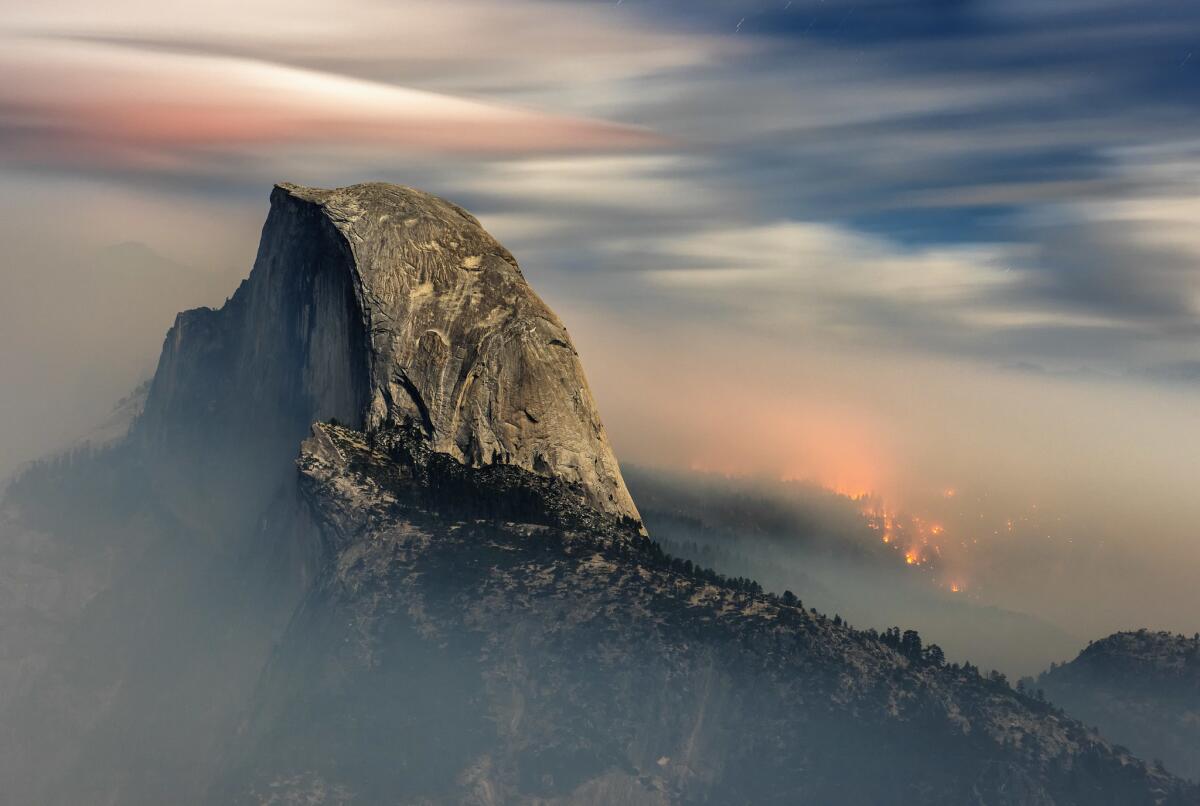
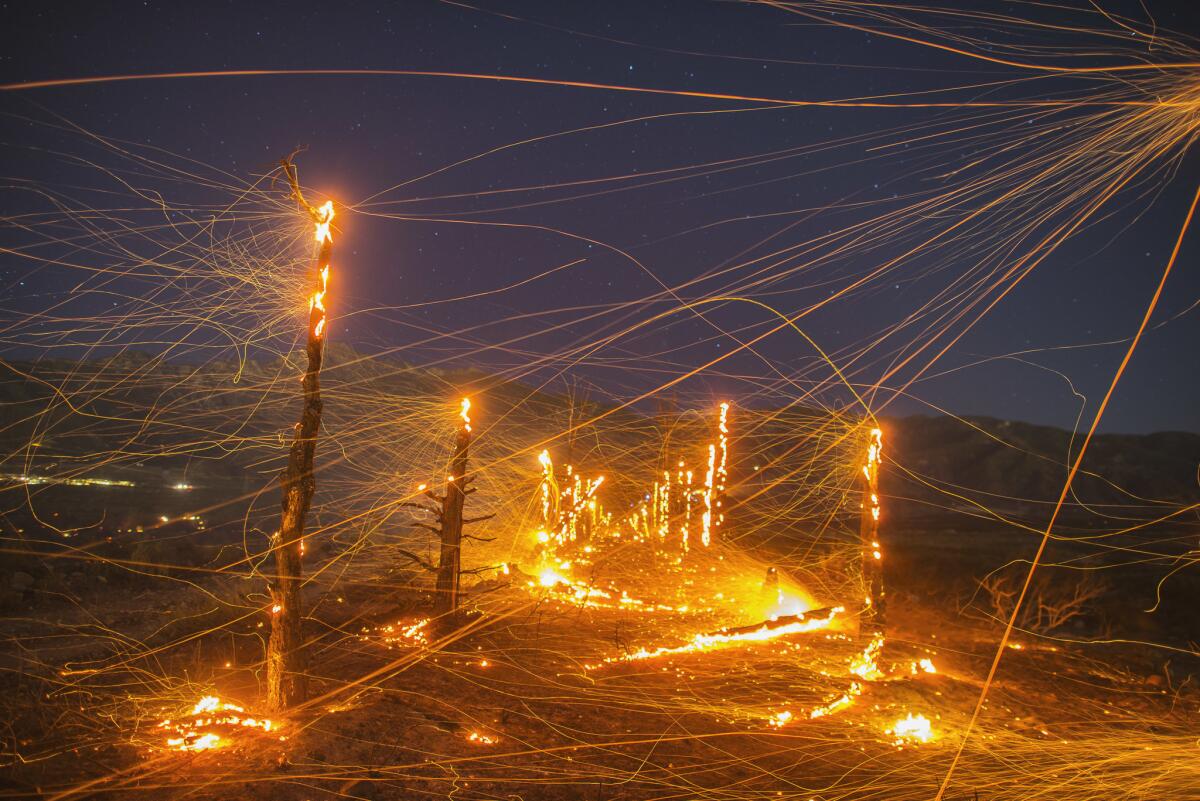
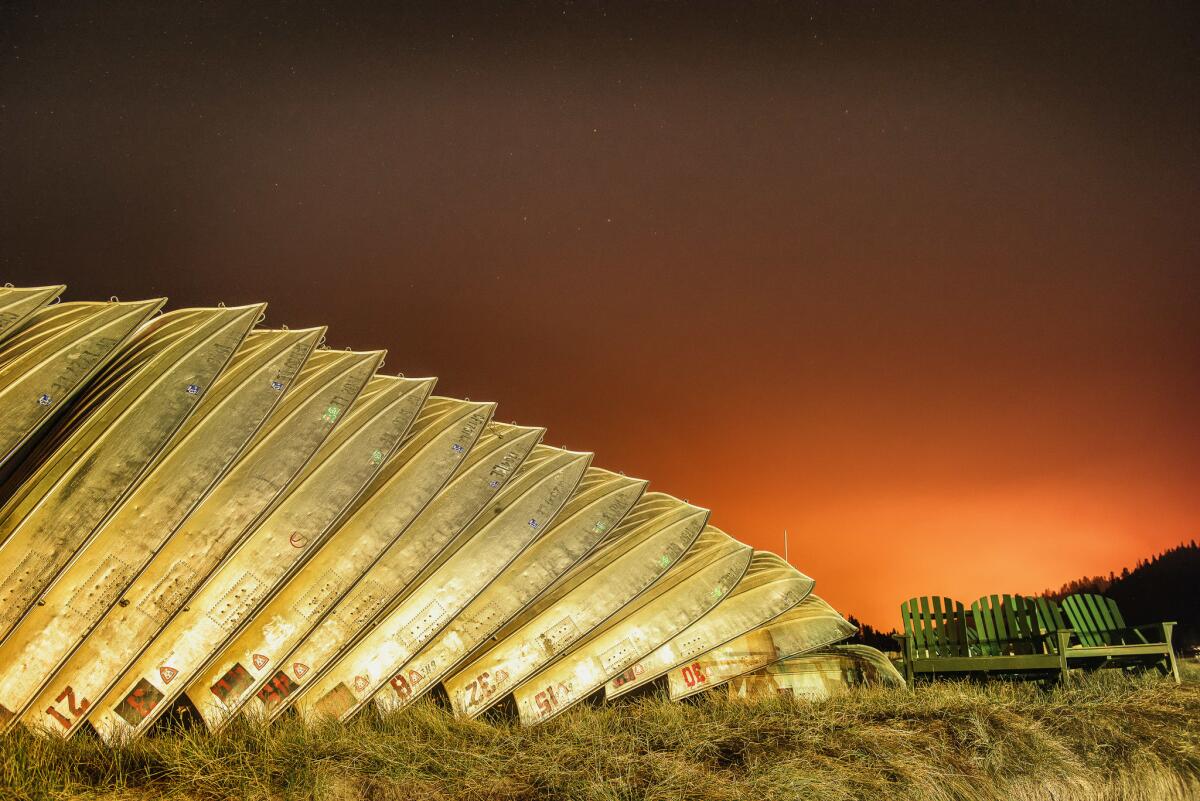
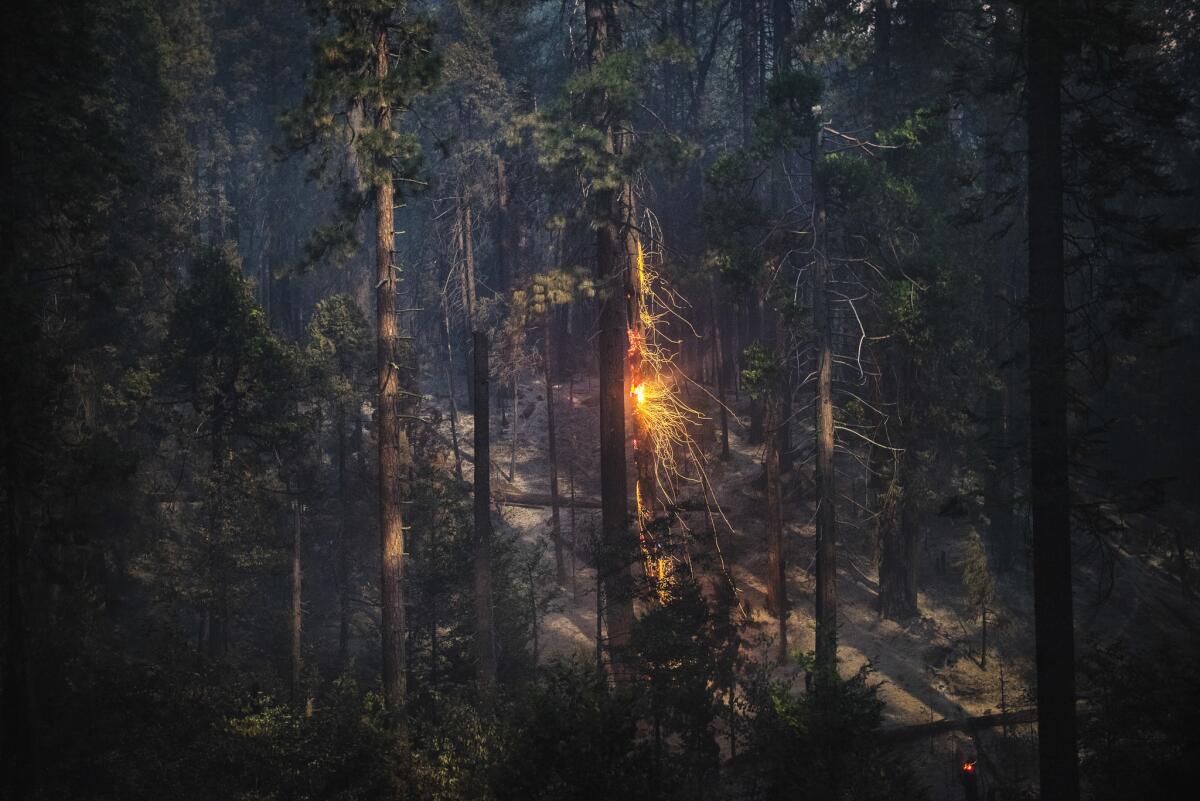
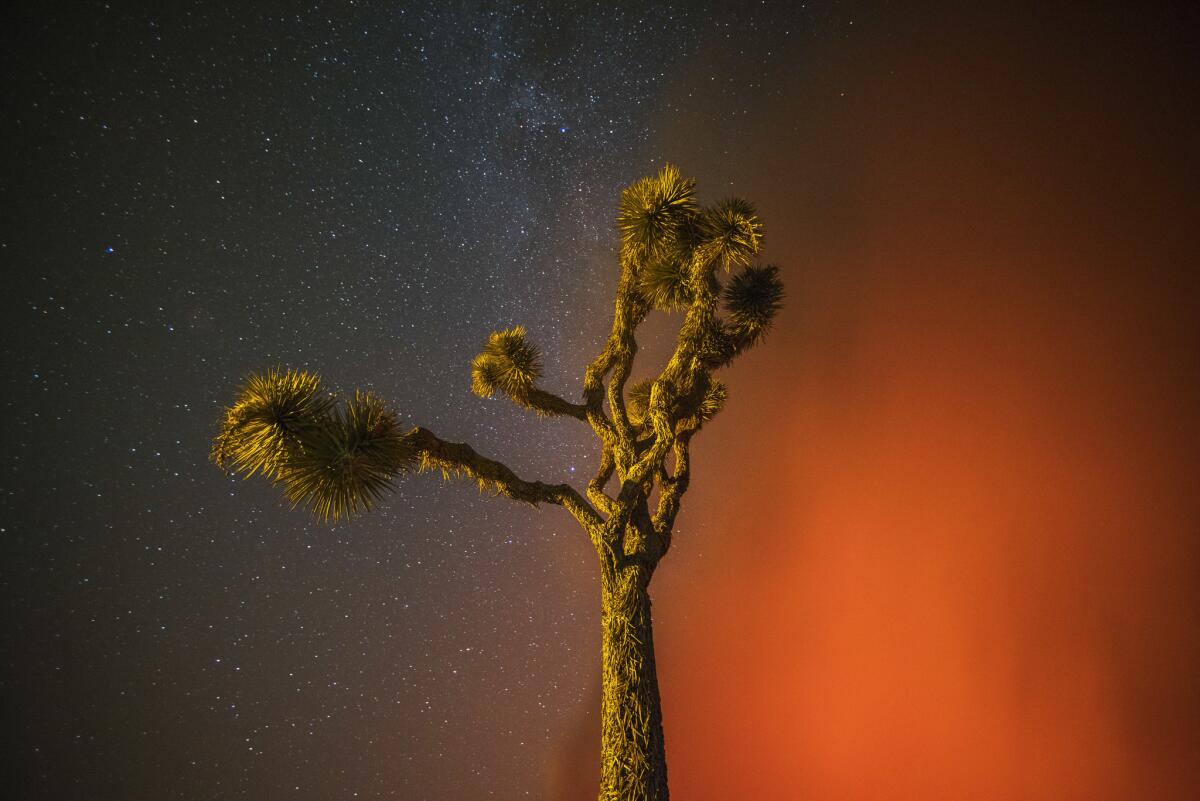
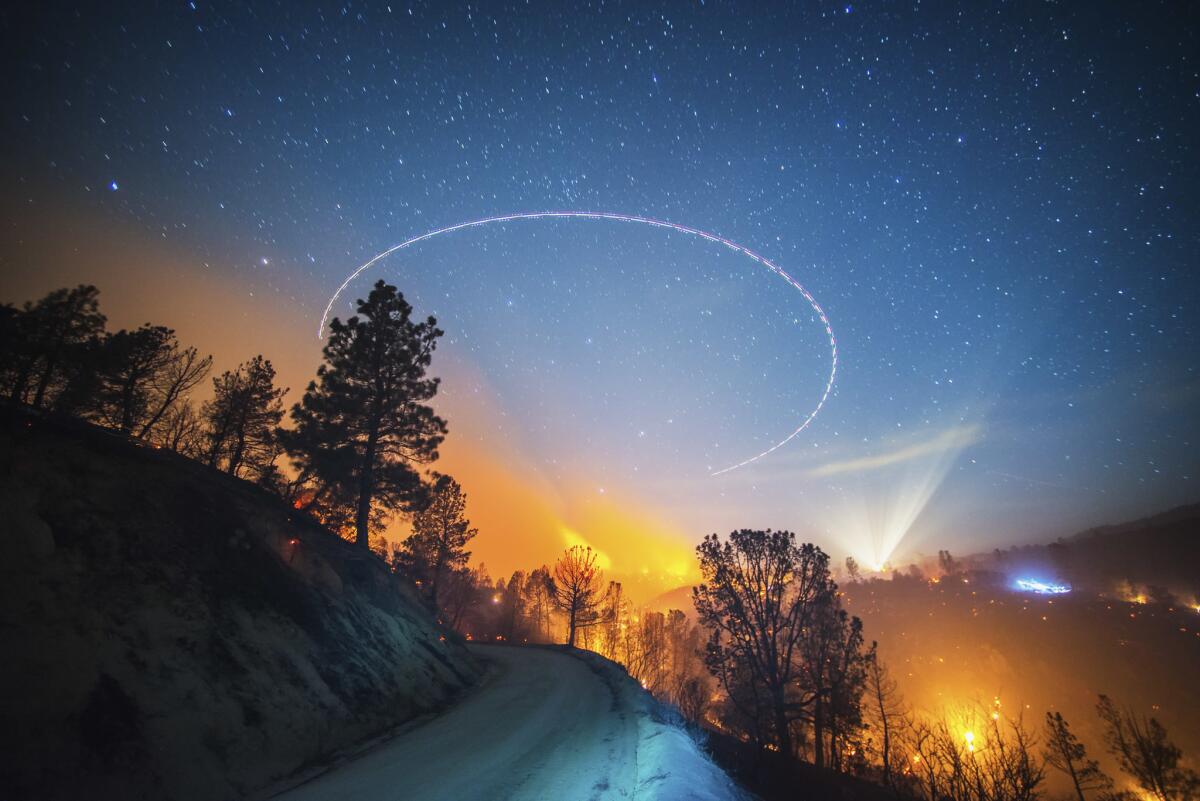
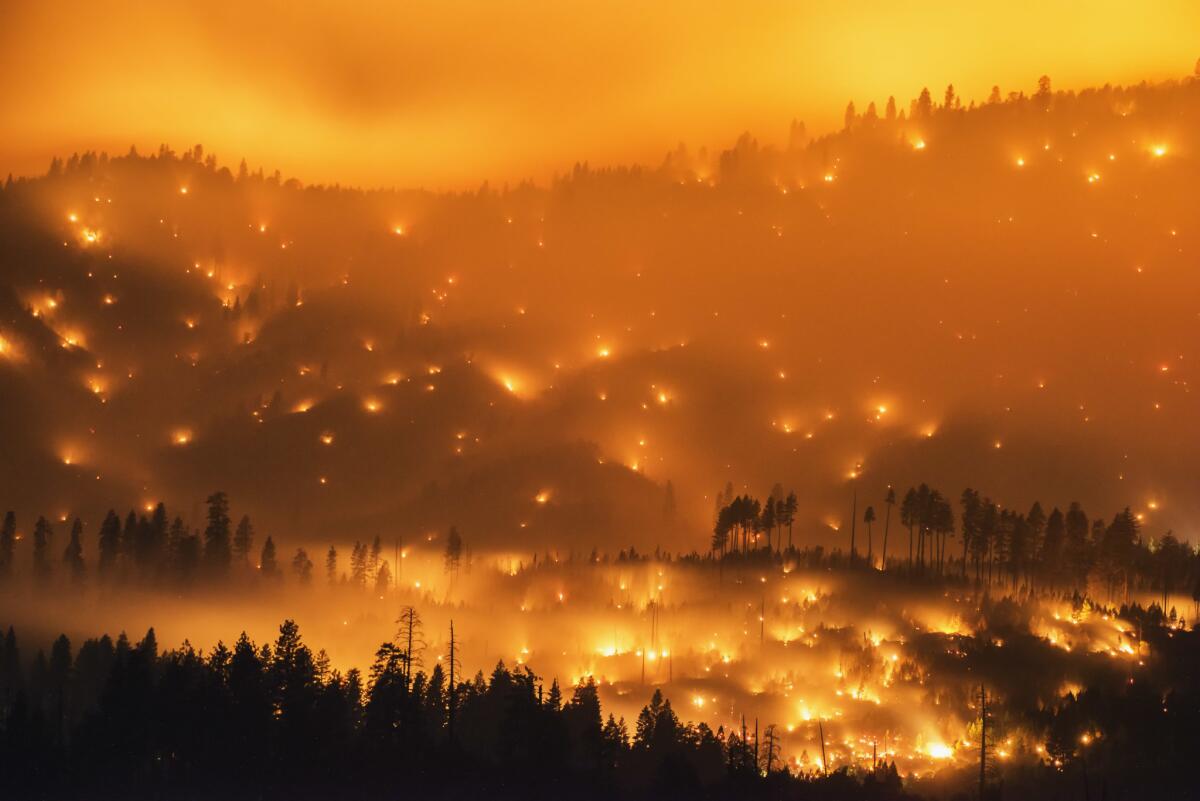
Sign up for Essential California
The most important California stories and recommendations in your inbox every morning.
You may occasionally receive promotional content from the Los Angeles Times.






